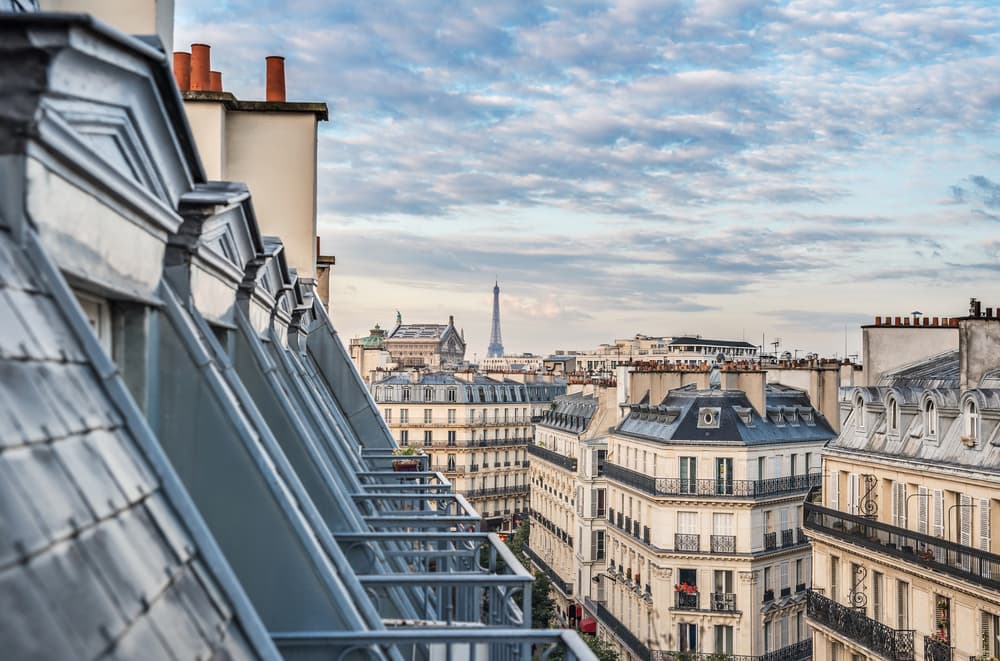

Although gray is the color most people associate with Parisian roofs, the reality is more nuanced: it covers only about 70% of buildings. In addition to this mixture of light gray (zinc) and dark gray (slate), green can be found on monuments such as the Garnier Opera House. This hue is the result of the wear and tear of copper (originally red) and, from the air, there is a more global panorama of gray-blue in the Parisian sky.
From advertising to cinema, photography to painting, the many shades of these typical roofs never cease to inspire designers, but while it is particularly aesthetic, zinc was especially popular in the 1850s because it was less expensive and more waterproof than slate. Another advantage: by requiring less framing than slate, it freed up space in buildings and allowed people to live directly under the roof. The use of this material, which is now emblematic of Paris, was responsible for the appearance... of maid's rooms!
If it is forbidden to fly over Paris in an airplane, you can enjoy the beautiful panorama of its roofs by taking a little height. From the Montmartre hill, you can measure the dominance of this anthracite color on the Parisian heritage. You can also admire this architectural feature from the top of the Effeil Tower and the Montparnasse Tower or, during a shopping session, by climbing to the top of the Galeries Lafayette and the Bazar de l'Hôtel de Ville.
We think less about it but the Parisian roofs can also be observed from the Ferris wheel (installed in the Tuileries garden during Christmas holidays), from the balloon of the André-Citroën park or from the Astronomical Observatory of Paris.
Established in the capital in 1667, this Observatory has seen the gradual disappearance of wooden, thatched and slate roofs in favor of this zinc that roofers maintain and preserve discreetly for almost 2 centuries.
In fact, in November 2024, their know-how was included in Unesco's World Cultural Heritage list. Following in the footsteps of the French baguette, which will be recognized in 2022, this is another emblem of France in the world that has been recognized and, above all, will receive financial support.
By the way, did you know that it's possible to buy a real piece of this heritage in the form of a design object? From a sheet of zinc more than half a century old, on which some traces of life (stains, scratches, more or less smooth texture...) still appear, the well-named company Toit de Paris indeed proposes unique silk-screened key rings or district plates. Made entirely in France, these pieces are the ideal gift for anyone who wants to keep a little piece of Paris with them.
Valerie from Comme des Français
----
Continue your reading by discovering